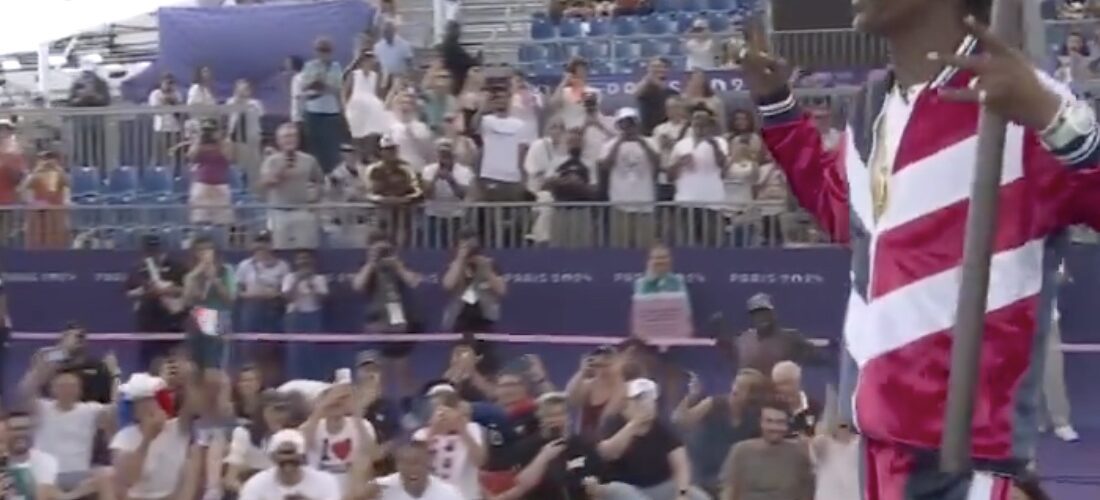Watch Snoop Dogg introduce breakdancing’s Olympics debut
It’s finally here. After being declared an Olympic sport in 2020, breakdancing has just made its Olympics debut in Paris, and it’s still happening as we speak. (Tune in!) It’s technically called “breaking” at the Olympics, but semantics aside, anyone familar with the B-Boys and B-Girls of the ’80s and ’90s will recognize the moves currently being rocked at this summer’s Olympic games. And to introduce its Olympics debut, they recruited a living hip hop legend, Snoop Dogg:
If you’re wondering how exactly breaking works as an Olympic sport, New York Times writer Jonathan Abrams sheds some light:
Breakers will face off in head-to-head battles, similar to the competitions at parks and parties when breaking originated in the Bronx during the 1970s.
The competitors will be separated into four groups in an opening round-robin round and will not know the music ahead of time. A D.J. will spin, and the breaker will try to marry their moves to the music.
Each battle will consist of three rounds, or throwdowns, with the breakers alternating one-minute turns. The breaker who wins the best of three will advance.
Eight winners — two from each group — will advance to the knockout or quarterfinal phase, where they will be ranked in a bracket according to their opening-round scores. The No. 1 ranked breaker will battle No. 8, No. 2 vs. No. 7, and so on, eliminating competitors through a final four and gold medal battle.
Abrams adds that the judges will score the breakers on five criteria: vocabulary, technique, execution, originality and musicality. “Viewers won’t have to wait until after a battle ends to know who is ahead,” Abrams continues. “Judges will use digital sliders, like the faders on a D.J.’s mixing board, to represent each of the scoring criteria, moving a slider toward the breaker they believe is ahead in, say, originality at that moment. There are penalties for crashes, wipeouts and falls.”
“Breaking will also be the only Olympic sport with a misbehavior button. At its core, breaking is a battle of one-upmanship. But a judge can hit three different misbehavior buttons if a competitive act crosses the line into crassness.”
One of the U.S. team’s members, Victor Montalvo, spoke to Billboard about breaking becoming an Olympic sport:
I feel like the whole community was shocked. We did not expect it. This was out of our heads. It was really cool, like, “This is a new goal we can achieve.” We’re stepping into the sports world. We’ve never had that opportunity to show the dance, and now we do. It’s really cool to see the positive reactions and the support we’re getting. There are a lot of people supporting me who haven’t seen breaking — or haven’t seen it since the ’80s.
One of the other US team members, Jeffrey “B-Boy Jeffro” Louis, spoke about studying old-school hip hop breakdancing to prepare:
I have to study everybody. If you’re involved in breaking, you have to go back. You have to know the history. There are a lot of moves back then that are not used right now. People might see it as “they’re basic,” but when you haven’t seen something in forever, and something reappears, people say, “That’s a classic move.”
The Olympics website also has an FAQ about breaking for more.
Check out some clips:
[embedded content]
